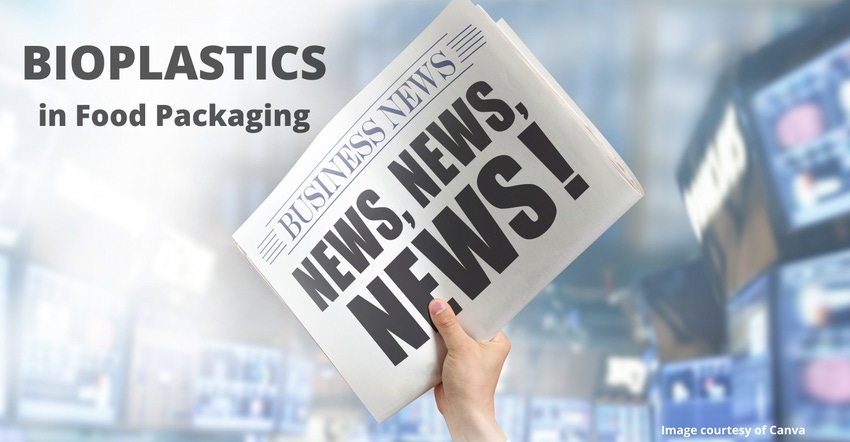The biopolymers market has a "foodie" flavor from sources that include food crops and food-processing byproducts used to make sustainable food packaging.
April 13, 2022

Can you believe that it's been eight years since The Coca-Cola Co. introduced the PlantBottle? That breakthrough, first-generation PlantBottle replaced one of the two base components of polyethylene terephthalate (PET) with renewable materials made from sugar cane byproducts.
Today, biopolymer advancements are progressing at breakneck speed, with a focus to make polymers from non-petroleum, sustainable resources. It's a movement that's accelerated as packaged brands, retailers, and other supply chain stakeholders execute sustainable packaging plans and goals aligned with carbon-footprint reduction and increased environmental health.
We take a snapshot look at the research and commercialization of renewable bioplastics for food packaging found to-date this year. These 10 developments found on Twitter include film windows made from sugar, compostable market acceptance in Europe, "smart" self-repairing polymers from plant-derived pectin, greener clamshell packaging for produce, a home-grown startup that taps corn's potential, protective edible coatings for produce, and more.
This report sets the stage of the global biopolymers market, which is forecast to expand at a 11.45% CAGR 2022-2026 with the APAC region dominating growth.
Research: self-repairing biopolymers from pectin.
100% compostable packaging’s film window is made from sugar.
Bavarian consumers like using compostable bags for fruit and vegetables.
Research: edible biopolymer coating can extend the shelf life of fruit and vegetables.
A grassroots effort making sustainable packaging using bioplastics from corn.
Greener greens: Grateful Greens Vermont's packaging relies on bioplastic and biodegradable materials.
More news on polymers from pectin, this time for biopolymer food packaging films.
Another food-waste byproduct used for bioplastics: fava beans in Africa.
Sugar-based plastics show a lot of promise.
For the final item and with a nod to the pioneering PlantBottle, we highlight the latest generation of sustainable beverage packaging that's a hybrid: Poto brand reusable water bottles made from bioplastic and 70% paper.
If you're interested in staying abreast of biopolymer developments, sister publication PlasticsToday offers a frequently updated stream of news in this market.
You May Also Like


